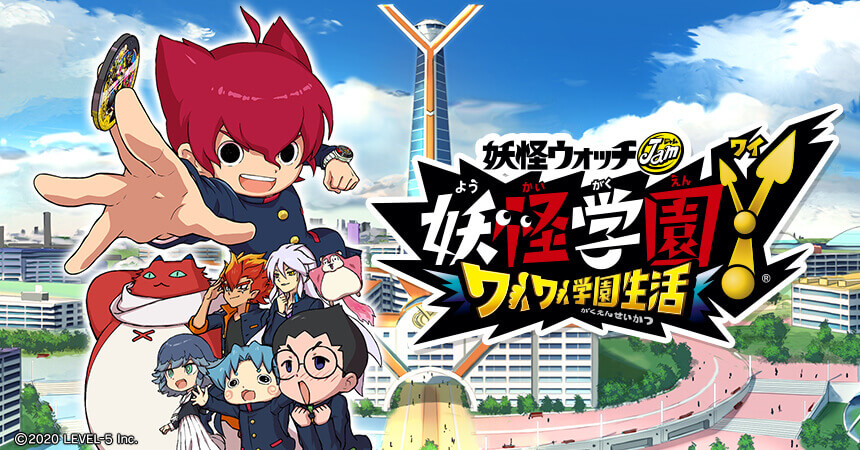


LEVEL-5 plans, produces, and markets projects for a wide range of generations, always delivering a warm, familiar feeling. These projects include Yo-kai Watch, Inazuma Eleven, Professor Layton, and Ni no Kuni, many being cross-media creations that span various media including TV anime, movies, and manga. Two production teams are currently using Live2D—the team behind the introduction and special move effects for the game, and the team responsible for producing promotional videos and other videos.
— Tell us a little about YO-KAI GAKUEN Y, the most recent addition to the popular Yo-kai Watch series.
YO-KAI GAKUEN Y is the most recent title in the Yo-kai Watch series and set in the very mysterious “Academy Y” school. We made this game using Live2D.
This school-based RPG allows players to make friends, get into different kinds of trouble, and battle vengeful ghosts as they build relationships with other students and progress through school. The ultimate goal is to unravel the mystery of the school and achieve the ultra-popular “Favorite” status.
— Why did you decide to use Live2D for this project?
In previous projects, we created numerous 3D cut-scenes and dialogue scenes.
The ability to change the camera angle and other various freedoms make 3D appealing, but the production costs tend to be high and 3D tends to give a different impression than the original illustrations.
We decided to use Live2D because Live2D allowed us to create more efficiently while still capturing the quality of the original illustrations.
— So you decided on Live2D based on past experiences and because of the lower production costs compared to 3D? Did you see an improvement in production costs?
Yes, we did. Using Live2D allowed us to develop the game with even greater efficiency.
We could then devote that extra time to improving quality and technical development.
— I am glad to hear Live2D helped you improve your development efficiency. What points in specific did you focus on when using Live2D?
We prepared two model types and divided our efforts between each as needed. The first model type made full use of the Live2D functions (*1), which we used for the quality-intensive main characters. The other type was used to reduce production costs (*2), which we used in combination with 3D events. Models designed for reduced production costs use standardized poses, parameters, and other elements, and we can operate the models simply by changing between different original illustrations.
To reverse asymmetrical characters, we prepared separate reversed parts to fully capture the quality of the original illustrations.
.jpg)
.jpg)
— Your approach includes a wide range of special techniques, right? What advantages did Live2D provide for the expressions?
YO-KAI GAKUEN Y is a project that also exists in the anime world, so I think the ability to make the illustrations themselves move brought a strong sense of familiarity and closeness to the image we had for the project.
Another advantage of using Live2D is the ability to create manga-like comical expressions that are difficult to create with 3D. This added to the appeal and personality of the characters.
For promotional videos, we often used illustrations featuring a group of characters. By combining these with Live2D, we were able to create a sense of space and time to better communicate the world and its characters.
— Do you have any plans for the future?
We hope to use Live2D to improve our production efficiency even further as we become better at communicating the appeal of the project and the characters.
— Thank you for your time today!